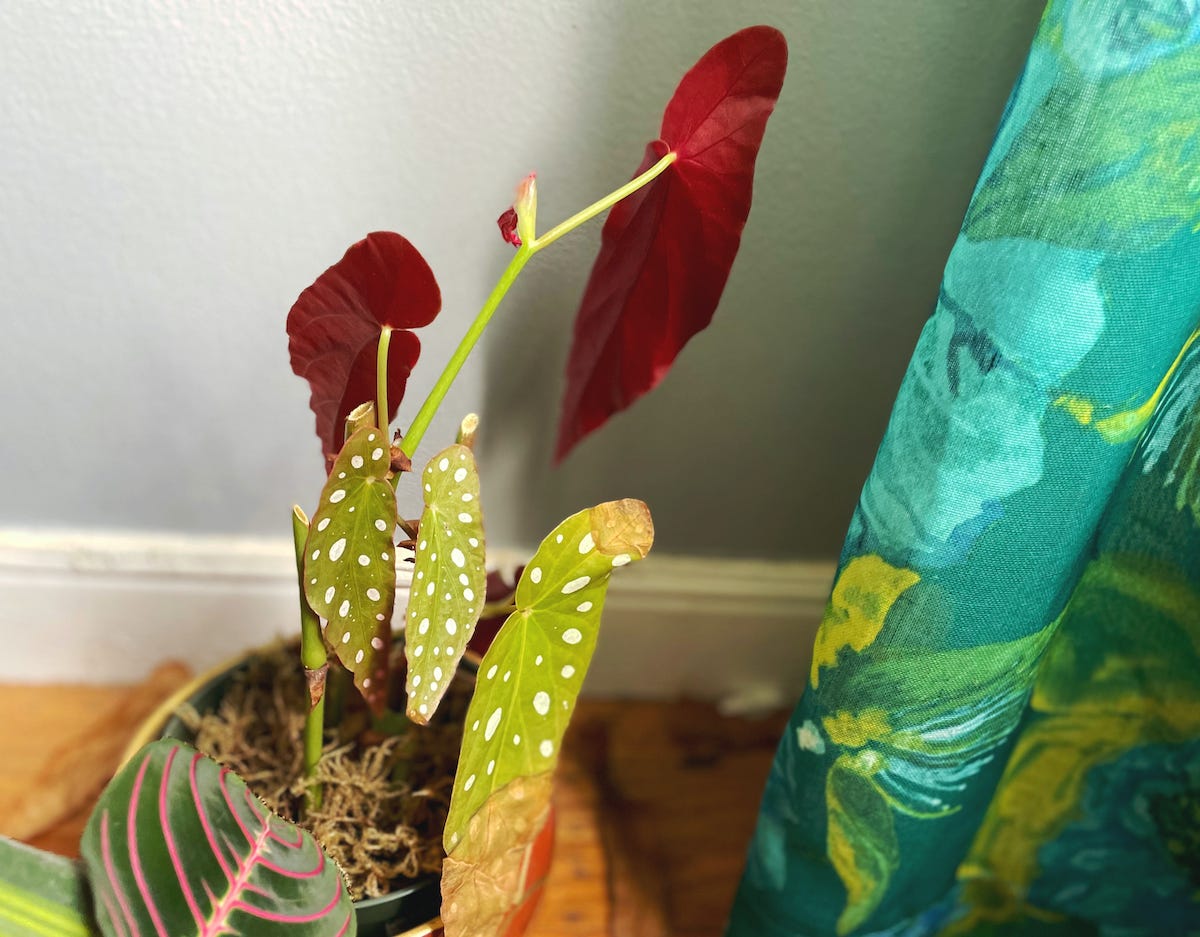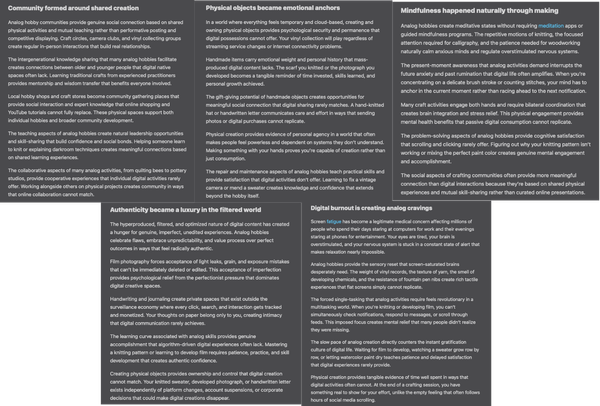What plants have taught me
Lessons learned from many years of container gardening & a source request.
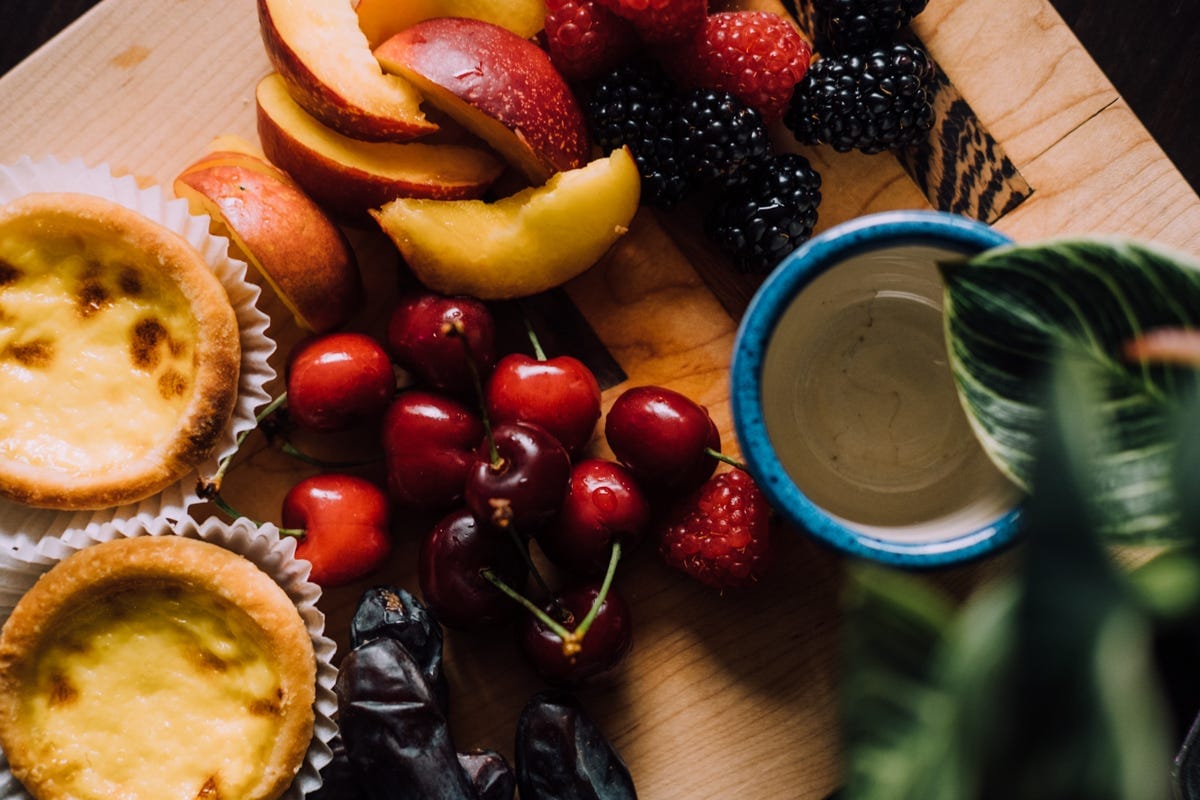
📝 Notes from Jenn:
Hi all, I am traveling to Athens in two weeks and then doing a stopover in Porto. Do you have coffee, food, or park recs in either city? Please send them!
❓Source request: Who gets to call coffee, coffee? Are you a purist or have strong opinions on what gets to be called “coffee” in relation to additives? I’d love to talk to you about this for an article (In my last send, I only gave details about the article & forgot to include the who part of the source request).
🛠 Current project: Zelda: Tears of the Kingdom. My nights have been completely overtaken by this game and I am not ashamed to admit it.
🔏 Last week, paid subscribers received an essay on the feeling of being fulfilled.
But the feeling after? That was new. I felt like I was doing something I was meant to do. I felt so good and fulfilled, like it fed something in my soul.
🍩 What I ate/drank/snacked on: goodies from the farmers market & nearby bakery


What plants have taught me
Unless you’re new to reading my newsletter, you probably already know that I’m very into plants. I don’t expect you to also be as dedicated to them. My plant parenthood approach veers between helicopter mom and “let’s see how you do here.” I tend to be more lazy than I should be and some plants do hang on the edge of neglect, going several years without the needed repotting.
When I was new to this hobby, I had only a handful of plants, and with every plant I killed, I felt its impact on my confidence. I used to say that indoor container gardening taught me patience. Not that I was particularly impatient before, but the waiting game with plants is on a different level. Some plants bounce back quickly after a repot or trim; others throw a fit. I’m almost a decade into this hobby and I stopped counting after 50 plants (most of them are very small). I am no longer as devastated when I kill a plant, because I usually know what caused the death and sometimes, it’s just inevitable.
Even the most “perfect” of environments is not enough
There are a few places in my apartment that I would consider “perfect” for most indoor plants. One is next to my bed: great, indirect light and has humidity generated from all the surrounding plants. Because of the angle, I can’t see all the plants. This is where the “last-chance” plants go. I’ve given them everything and they still refuse to behave properly? Well, into that area you go. It’s the last stop before I throw them outside on my patio and let them fend for themselves.
Several succulents that were originally indoors are now outside. And they have thrived. It makes me mad that they couldn’t get what they needed inside, but hey, they’re happy in their new place. Somehow, they could deal with torrential rain, hail, and wind gusts, but not my apartment? Make that make sense.
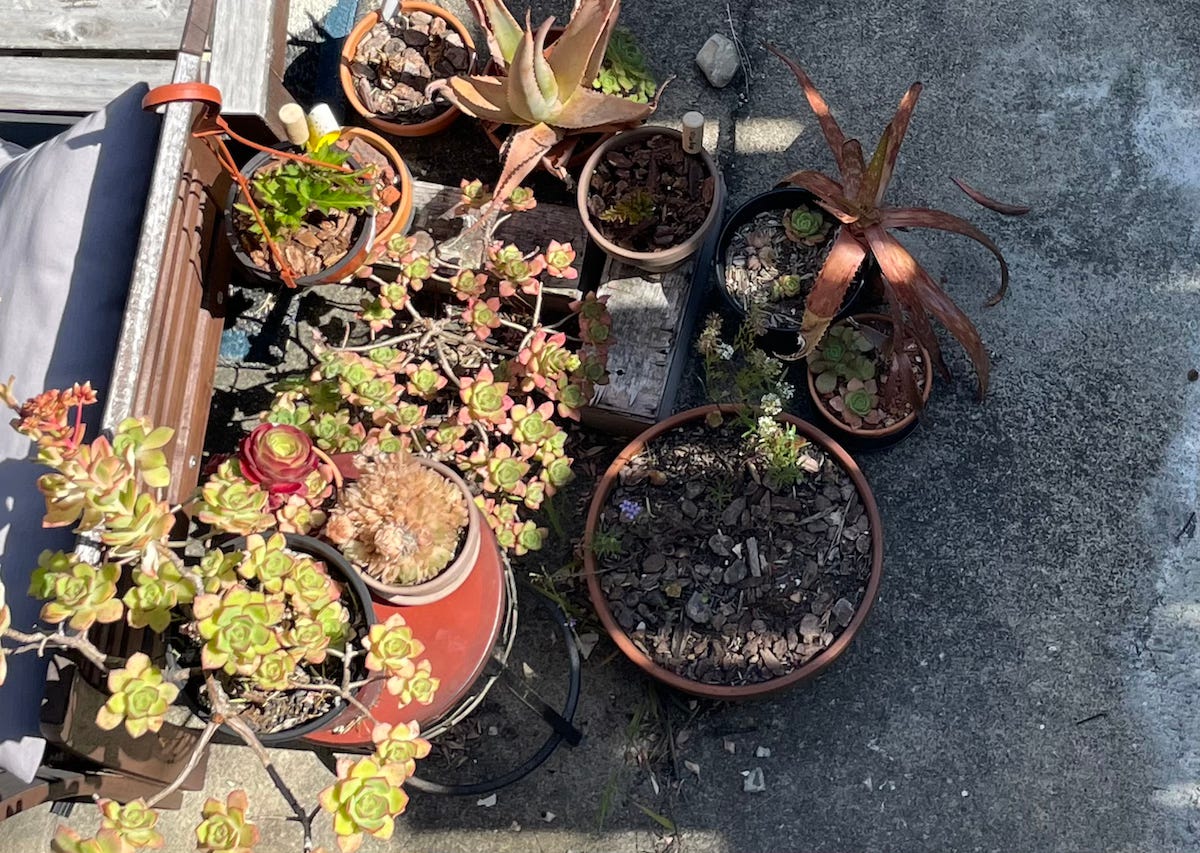
I can have the most perfect of environments for myself or my work, and it still doesn’t feel like enough. When you find yourself forcing the enjoyment of something, it no longer becomes good for you. It’s not worth this energy you’re putting in.
Take what you need, burn it all down, and rebuild
There are a few “issues” that used to worry me. Yellowing leaves meant that I was being a bad plant parent. Now I know that there’s nuance here, and like diagnosing an illness, you need to take other indicators into account.
If they’re the oldest leaves and yellowing, that’s perfectly normal. Leaves don’t live forever and the oldest ones are shed so new ones can grow. If they were yellowing randomly throughout the plant, something much bigger is at play.
For quite a few of my prayer plants in the stromanthe, calathea, and maranta families, I would see these big, beautiful, extremely colorful leaves in a store and be instantly drawn to them. Within a week of taking one home, they would throw a fit: they would stop moving during the day, some leaves would start curling on the edges, and new leaves stop forming. The light wasn’t perfect anymore, they didn’t have the same humidity, the watering schedule was different, they weren’t next to their old friends, and so on.
If this continued, I would start to worry. I mean, I’ve killed plenty of prayer plants; they like to keep my ego in check. Root rot was the biggest killer. They like to not run out of water, but not be around too much water, and the air needed to be tropical (high humidity with a plant that likes a moist soil? A recipe for root rot). So when I start to see the “throwing a fit” signs, I unpot them and inspect the roots.
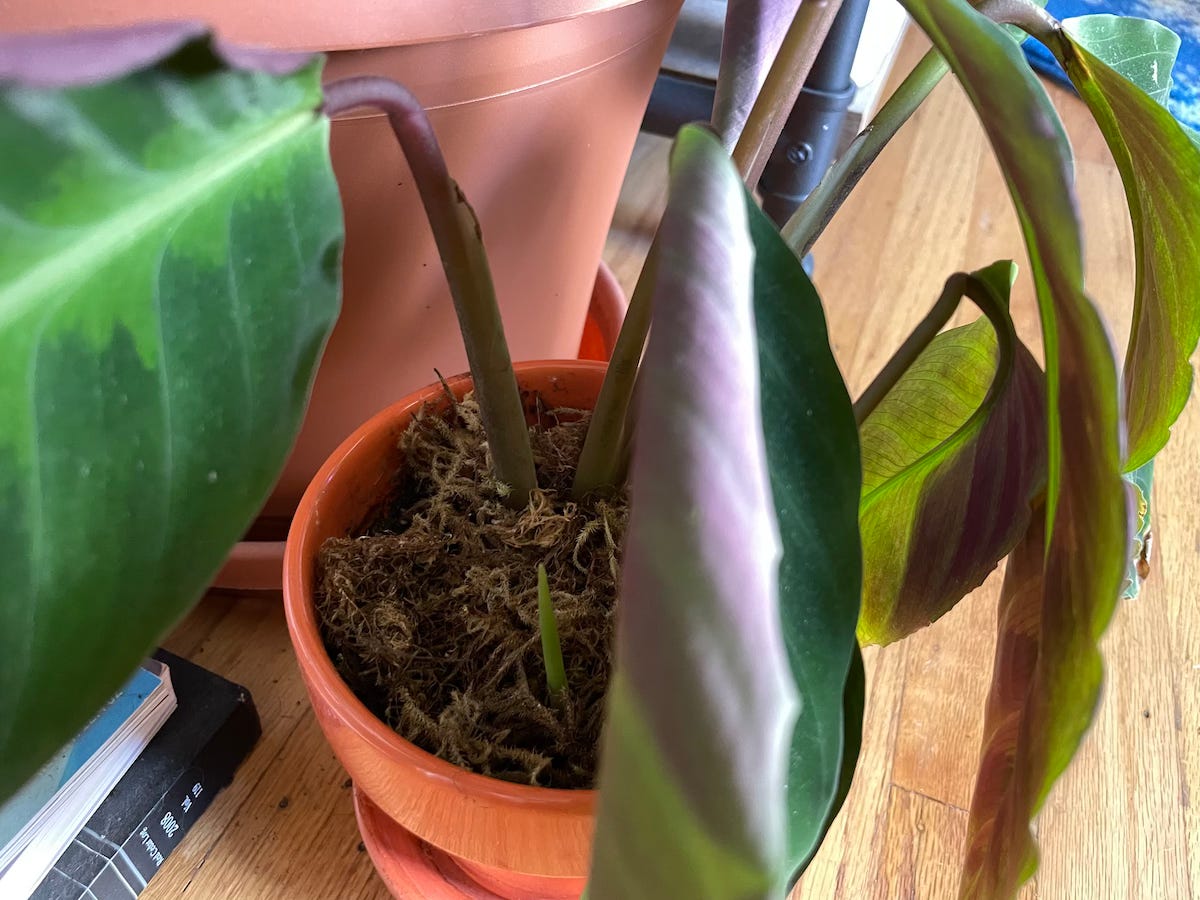
More often than not, I would find a new shoot that was forming below the soil line. This means that eventually, the current leaves would die and the energy from them gets pushed into the new growth. My other plants don’t do this. They’ll have babies, but they’ll continue to push new growth. Maybe I’m doing something wrong, but the plants seem to grow just fine.
Sometimes, you really just need to burn it all down and take what you need to rebuild.

📤 digital marketing
- New Report Suggests that Consumers Are Far More Swayed by UGC than Influencers [Infographic] [Social Media Today]: “90% of respondents said that they would prefer to see brands share content from actual customers, while 86% said that they’d be more likely to trust a brand that publishes user-generated content, as opposed to influencers.”
- Ultimate Guide to Email Marketing Trends 2023 [Mention]: A detailed list of 10 current trends
- Instagram Ranking Explained [Instagram’s official blog]: A look at the individual algorithms of the feed, stories, etc.
👀 interesting reads
- The Case for Leaving Strangers in Your Family Photos [Slate]: An argument against using the magic eraser feature.
But I also like how full of people this beach is. Seeing everyone else camped out in the background reminds me of all the things I observed as a child, attending this crowded beach. It was so different from the small, beloved private club on a lake’s edge that we went to every summer day back home in New Hampshire.
- Puritanism took over online fandom — and then came for the rest of the internet [Vox]: As someone who was into fandom in high school but no longer participates, it’s interesting to read how this has evolved.
“If you go into certain radfem forums, you’ll see language mirrored one-to-one,” Aburime told me, describing the way TERF rhetoric overlaps with and sometimes infiltrates fandom spaces. “It’s almost like a game — slipping some ideology secretly” into a fannish experience. “It’s misinformation under the guise of activism.”
- I Think I’m Going to Be Sick [Longreads]: Content warning for lots of detailed descriptions of vomiting and theme park rides. My motion sickness is not as bad as described here, but it does stop me from playing VR games or watching IMAX movies.
So on a theme park ride, the relationship between what you’re trying to do with your body and what actually happens to your body is unpredictable and leads to destabilization. Yes, just picture poor me, strapped to a seat and pushed through space. “You’re trying to stabilize the head against these motions that you cannot predict and cannot control,” Stoffregen says. “That’s why you got sick in that device.”

